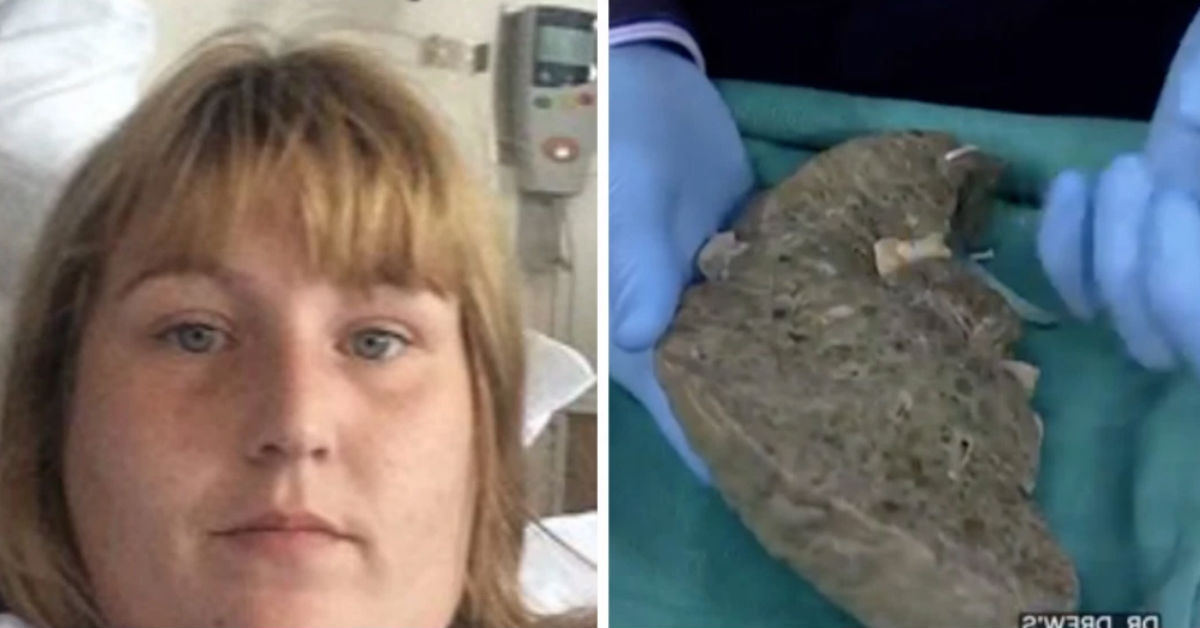Woman Almost Dies After Consuming Popular Soda

The liver is located in the upper right portion of the belly under the ribs, it is the heaviest organ in the body and one of the largest. The liver primarily processes nutrients from food, makes bile, removes toxins from the body and builds proteins. Some of the habits that damage the liver includes, taking alcohol, bad choice of diet, withholding urine etc.

In November 2015, 26-year-old full time mother, Mary Allwood of Brixtham, England, was rushed to the hospital in an ambulance due to severe pain in her side. On getting to the hospital, Medical staff examined her and an MRI scan revealed that her liver was twice the normal size.
As said earlier alcohol consumption is one of the leading causes of liver disease, due to the liver’s size doctors automatically assumed that she was an alcoholic, until Mary revealed that she does not drink alcohol, but instead consumes 20 Red Bulls every single day.
Mary was drinking the equivalent of 16 Mars Bars in sugar daily and as much as the caffeine found in 17 cups of coffee, she would stash the cans all over the house and spent nearly £2,300 a year on the drinks.
“I needed it and I didn’t care at the time what damage it was doing to me,” Mary explained. “If I didn’t get my fix I would be miserable and grumpy and it just wasn’t an option – I would make sure I got it.”
Mary recalled how she found herself on the self-destructive path of sugar addiction. “At first I would feel as if it would give me a buzz and energy, but eventually it wouldn’t give me energy – I just needed it,” she said. “I needed the taste and fizziness. It was my heroin. I would feel awful if I didn’t have it.” she further said that she became addicted just four months after trying the energy drink for the first time.
“I would go to the supermarket and get ten multi-packs at a time,” she stated. “I’d tell the person at the till that I had a restaurant and I was buying them for that reason.”
According to the Daily Mail, the high sugar content of Red Bull can lead to fat being deposited in the liver, causing scarring and ultimately cirrhosis (liver damage).
Due to the excessive consumption of the energy drink, her weight shot up from a size 16 to a size 24, she also experienced an episode of heart palpitations. All these were not enough to prevent her from continuing her Red Bull habit. It was only when she was got to the emergency room that doctors told her that her liver was damaged that she decided to quit. “They looked at me in disgust,” Mary recalls.
Mary went on a meal-replacement diet, replacing her Red Bull with more than six liters of water every single day. She apparently experienced withdrawal symptoms common among people trying to break an addiction for about four weeks, including mood swings and shakes. She no longer craves the sugary drinks.

“I tried a drop on my tongue and it tasted like pure sugar,” she says. “I’ll never go back to how I [was].”
Now that Mary has beaten her addiction, she wants others to be aware of the dangers that Red Bull can pose.
“I think the rules should be changed and it should be treated in a similar way to cigarettes, with the blank packaging,” Mary claims.

